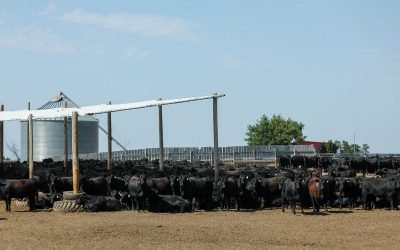
Highlighting genetic decisions
November 16, 2011
Welcome to the world of a writer. Last week, papers and corresponding highlights consumed my time. I pored over a research document, analyzing and interpreting every word. I highlighted and scribbled marginal notes, pulling out little nuggets of information to share with you.
My subject last week was a light little read by Dr. Nevil Speer, a professor at Western Kentucky University, titled “Crossbreeding: A free lunch, but at what cost?” In it, Dr. Speer examines why it seems that the so-called “free lunch” of crossbreeding is still overlooked in application.
It’s been shown that English-Continental crossbreeding can add pounds at weaning and comes with some maternal benefit. So why do less than 50% of commercial producers classify their herds as “crossbred?”
Quite simply, Dr. Speer explains, because it’s not that simple.
Here are a few facts that I highlighted and underlined from the introductory section of the research paper:
“The Angus breed now accounts for approximately 70% or more of the genetics in the nation’s cowherd. “That leads to concern for some, especially in the academic world — why does this one breed dominate when the idea of crossbreeding seems so simple? Here’s some of Speer’s thoughts:
- “45% of producers indicate breed is an unimportant consideration when purchasing a bull or semen to breed replacement heifers.”
- That means a large portion of the industry is either implementing a crossbreeding system haphazardly or completely disregarding strategic planning when it comes to genetic management.
- It also exemplifies the wide gamut of philosophies regarding genetic management, hence the roadblock with crossbreeding – there’s no such thing as a one-size-fits all solution, especially when it comes to breeding decisions.
Here’s the bottom line: Crossbreeding and its resulting hybrid vigor is not a miracle profit maker because nothing is. Profitability is a model of complexity. To be successful in any breeding program, cross or straight bred, a certain amount of strategic planning and genetic research is required.
The rest of the paper further explains how changes in marketing, capital and cost management and increasingly accurate genetic tools affect the application of crossbreeding systems and may point to straight breeding success stories. We’ll further examine each of those topics in future blog posts and discuss the cost/benefit of a poorly planned or strategically executed genetic plan.
What path are you on? We know there are no right or wrong, black or white answers in a fragmented industry of 750,000 independent individuals. But we do know that strategic genetic decisions can make a huge impact on profitability and consumer satisfaction.
Looking forward to hearing your thoughts on this topic as I share more of the highlights of Dr. Speer’s research.
You may also like
Certified Angus Beef Recognizes Beef Quality Research
First-place honors go to Andres Mendizabal, an international student pursuing a Ph.D. in animal science at Texas Tech University. His research is titled, “The Accuracy of USDA Yield Grade and Beef Carcass Components as Predictors of Red Meat Yield.”
Not all good days are sunny and warm
Stress of any kind affects performance and health, but also well-being and behavior, a special focus for CSU animal scientist Lily Edwards-Callaway. Her team’s literature review found shade benefits vary by location, structure type and the weather.
Progress from small steps
Every day is a chance to learn and get better. Thousands of others like my new friends in Alabama are taking steps to meet the shifts in consumer demand, and to know more. Small steps in the right direction can start now. Even if it’s just recording a snapshot of where you are today, a benchmark for tomorrow.



